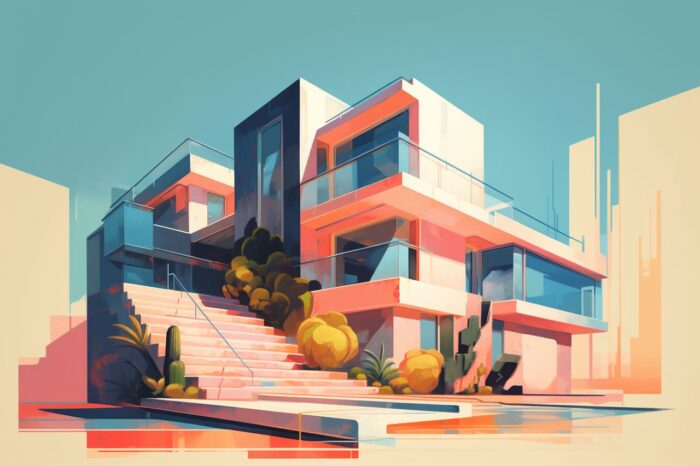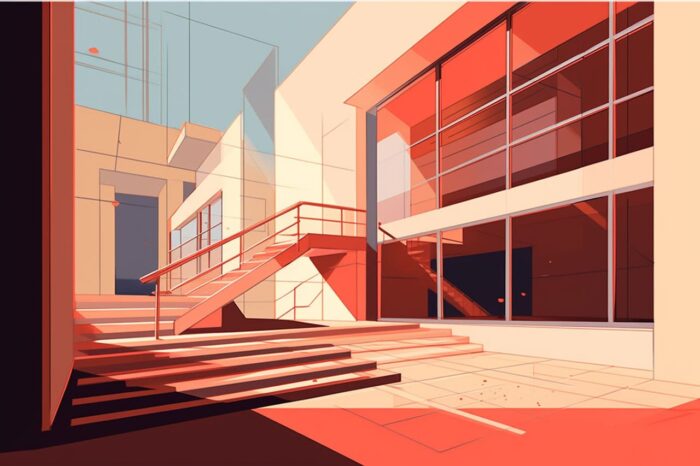Diving Beneath the Surface
If you’re an aspiring artist, then learning about perspective drawing techniques is an important part of becoming a talented artist. Being able to create a sense of depth in your artwork is an invaluable skill. Unfortunately, it is often one of the most difficult elements of art to master. This article will provide you with the basics of perspective drawing techniques and help you take your artwork to the next level.
Perspective drawing techniques involve creating a scene that looks realistic and three-dimensional. The trick is to make sure that the objects in your artwork appear to be the same size, regardless of how far away or close they are to each other. To achieve this, you need to use techniques such as vanishing points, lines of perspective, and horizon lines.
Vanishing points are essential for creating a realistic two-dimensional representation of a three-dimensional scene. They are points on the horizon line that converge in the distance, giving the appearance that objects in the scene are shrinking as they move away from the viewer. Lines of perspective are drawn from the vanishing points to the objects in the scene. These lines help to create the illusion of depth by making objects appear to be the same size, regardless of their distance from the viewer.
Horizon lines also play an important role in creating a realistic scene. A horizon line is the imaginary line that marks the furthest point from the viewer. It helps to create a sense of depth by providing an anchor point for the vanishing points.

Exploring Perspective Drawing Techniques and Tricks
Once you’ve mastered the basics of perspective drawing techniques, it’s time to start exploring some of the tricks that experienced artists use to give their art more depth. One of the most common tricks is to use overlapping objects. By overlapping objects, you can create the illusion of depth by making it appear as if one object is in front of the other. This technique is particularly effective when drawing figures, as it can help to create the illusion that a figure is closer to the viewer than the background.
Another trick that experienced artists use to create depth is to use foreshortening. Foreshortening is a technique where an object is drawn at an angle, giving the illusion that it is closer to the viewer than it actually is. It is particularly effective when drawing figures, as it can help to create the illusion of depth, even with just a few lines.
One last trick to create depth is to use texture and shading. By adding texture and shading to an artwork, you can create the illusion of distance and make it appear as if objects are further away from the viewer. This technique is particularly effective when combined with the other perspective drawing techniques.
Getting Crafty with Shading
Shading is the key to creating a realistic scene. By using shading, you can create the illusion of depth by making it appear as if objects are further away or closer than they actually are. There are many different shading techniques that experienced artists use, so it’s worth experimenting to find out what works best for you.
One of the most commonly used shading techniques is hatching. Hatching involves using lines to create the illusion of shading. The closer together the lines are, the darker the shading will be. It’s important to remember to keep the lines consistent in order to create a realistic effect.
Another shading technique is cross-hatching. This technique involves using two sets of lines that cross over each other. This technique is particularly effective when creating the illusion of shadows and can help to make an artwork look more realistic.
Finally, you can add texture to your artwork using stippling. Stippling involves creating dots of varying sizes and density to create the illusion of texture. This technique is particularly effective when used in combination with hatching and cross-hatching.

Adding Depth to Your Artwork
Now that you’ve learned the basics of perspective drawing techniques and explored some of the tricks that experienced artists use to create depth in their artwork, it’s time to start putting what you have learned to use.
When creating a scene, start by using the perspective drawing techniques you’ve learned. Make sure to use vanishing points, lines of perspective, and horizon lines to create the illusion of depth. Once that’s done, it’s time to start getting creative with shading and texture. Experiment with hatching, cross-hatching, and stippling to create the illusion of shadows and texture.
Finally, don’t forget to take your time. Perspective drawing techniques are complex and take time and practice to master. So don’t be discouraged if your art doesn’t look perfect the first time. Keep practicing and experimenting and soon you’ll be creating artwork with depth and dimension.